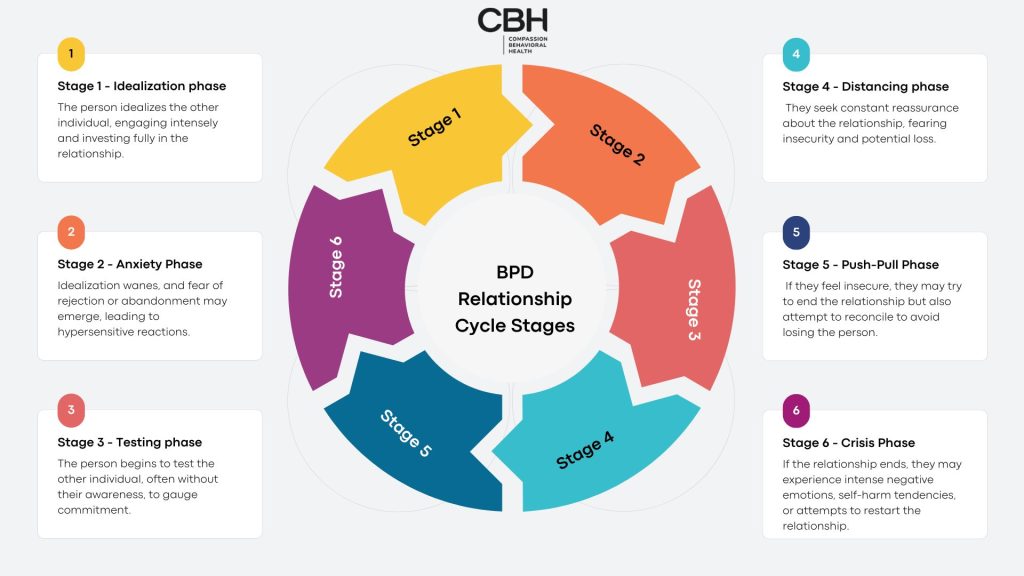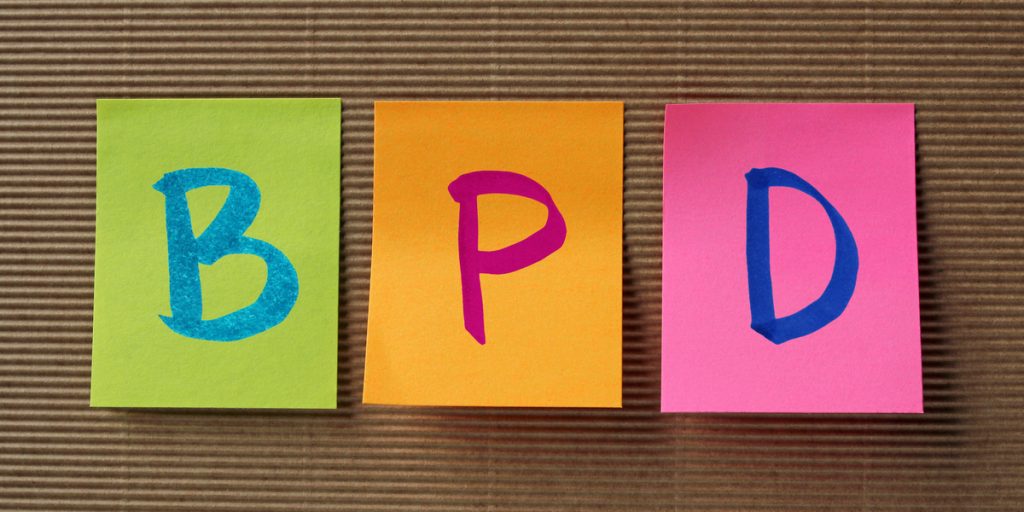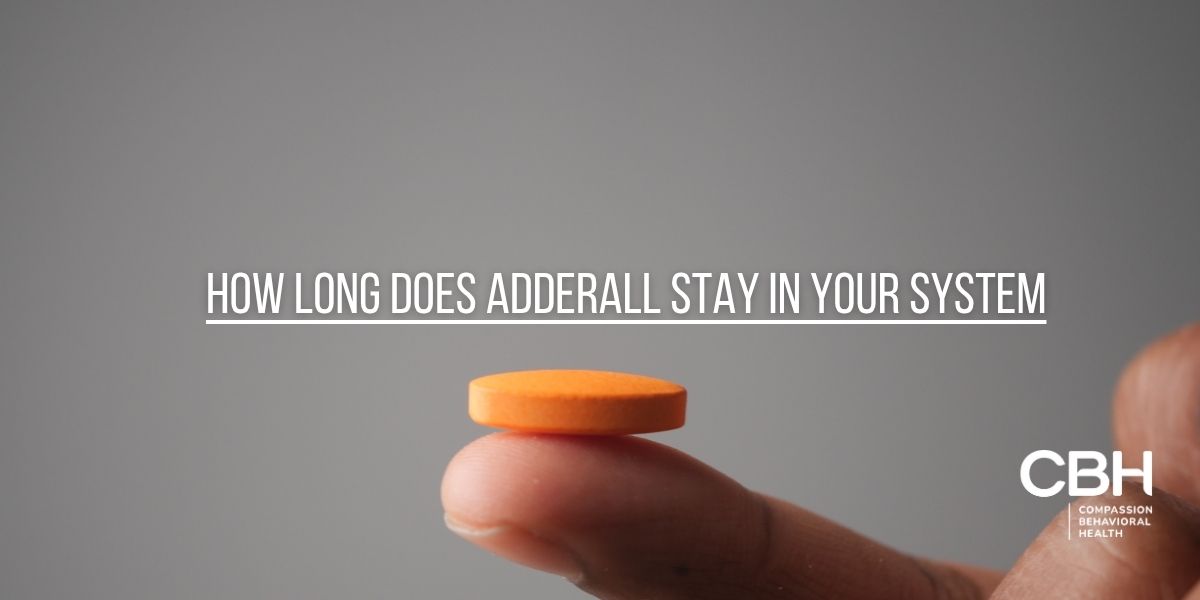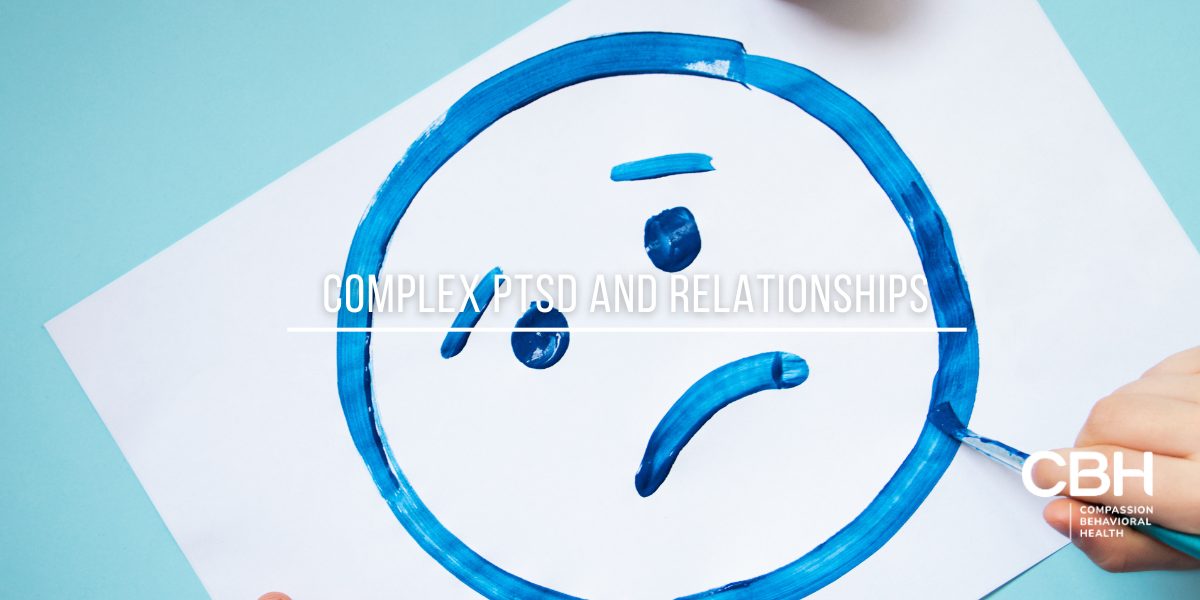What is Borderline Personality Disorder?
The National Institute on Mental Health describes borderline personality disorder as a pattern of variation in mood, self-image, and behaviors. The way that a person living with this disorder experiences these symptoms, can lead to difficulties in managing impulsive urges and healthily maintaining relationships. According to NAMI, about 1.4% of the adult U.S. population experience BPD in 2023.
What Are the Symptoms of Borderline Personality Disorder
If you are curious whether you or your loved one is living with borderline personality disorder, the Mayo Clinic provides the following symptoms to watch for:
- Heightened fears of abandonment, rational or imagined, may drive the person to take extreme measures to alleviate these feelings
- Repeated difficulties in maintaining relationships marked by conflicting instances of intensity, apathy, or resentment
- Shifting self-identity and image that could include altering goals, values, and perception of self
- Brief instances of stress-induced feelings of paranoia
- Impulsive and potentially dangerous activities like reckless spending, gambling, substance abuse, etc.
- Suicidal threats, behavior, and attempts at self-injury, are often triggered by fears of abandonment or rejection
- Intense mood swings that can cover a broad spectrum of feelings and emotions
- Repeated feelings of emptiness
- Unjustified or inexplicable moments of anger with no real identifiable trigger
Core Symptoms of BPD
The symptoms of BPD can vary widely among individuals, but several core signs are commonly associated with the disorder. These symptoms often manifest in emotional, behavioral, and cognitive patterns. Recognizing these symptoms is crucial for both individuals and their support systems to create effective coping strategies.
- Emotional Instability: Individuals may experience intense emotions that can shift rapidly, leading to feelings of emptiness or despair. This emotional volatility can make it challenging to maintain a stable mood, often resulting in feelings of frustration and confusion.
- Fear of Abandonment: A pervasive fear of being abandoned or rejected can lead to frantic efforts to avoid real or imagined separation. This fear can manifest in clingy behaviors or, conversely, in self-sabotaging actions that push others away.
- Impulsive Behaviors: Engaging in impulsive actions such as substance abuse, reckless driving, or risky sexual behavior can be common. These behaviors often serve as coping mechanisms for overwhelming emotions, albeit with potentially harmful consequences.
Interpersonal Challenges
Relationships can be particularly tumultuous for those with BPD. The fear of abandonment often leads to unstable relationships characterized by intense highs and lows. Individuals may find themselves caught in a cycle of idealizing their partners, only to later feel disillusioned and critical of them. This can create a push-pull dynamic that is exhausting for both parties involved.
Individuals may idealize someone one moment and then devalue them the next, creating a cycle of emotional turmoil. This pattern can be confusing for both the individual and their loved ones. Friends and family may struggle to understand the rapid shifts in affection and hostility, often feeling helpless or frustrated. Additionally, the intense emotional reactions can lead to misunderstandings and conflicts, further complicating the individual’s ability to form stable connections. Support from mental health professionals, along with open communication, can be vital in navigating these complex interpersonal dynamics, fostering healthier relationships over time.
While it is often associated with women, it is crucial to recognize that borderline personality disorder in men is not uncommon and should not be overlooked. If you or someone you suspect of having borderline personality disorder reports suicidal thoughts or engages in self-harm, please take lifesaving actions, such as calling 911, calling the National Suicide Prevention Lifeline at 1 (800) 273-8255, contacting your doctor, or reaching out to a friend or loved one closer to that person’s place of residence.
BPD Relationship Cycle

The borderline personality disorder relationship cycle is typically defined as a series of six stages with no definitive timeline. These include the following:
Stage 1:
The person living with borderline personality disorder will often idealize the person with whom they have formed a new relationship. This could mean that they view you as their new best friend, their future spouse if in a romantic context, etc.
During this period, the person will engage intensely with the other individual. This could include requesting more of your time be spent with them and acting completely invested.
Stage 2:
Over time, idealization and infatuation will begin to wane. As the relationship matures, the person may start to express anxiety or a fear of rejection. This could indicate hypersensitive or irritable responses to actions they perceive as negative, such as asking to postpone a social engagement or not returning a call or text in a timely manner.

Stage 3:
Once the person living with borderline personality disorder has begun to form suspicions that the other person may be looking to end a relationship, they may begin to “test” that individual in various ways. The other person often may not even be aware that they are being tested.
Stage 4:
If the person experiencing borderline personality disorder symptoms feels insecure about a relationship, they may attempt to distance themselves from the other person. They could continually ask for reassurances that you wish to maintain your friendship or romantic partnership with them.
Stage 5:
If the person living with borderline personality disorder does not feel that they have achieved their desired security in their relationship with the other person, they may attempt to end the relationship. However, if the other person accepts the dissolution of their relationship, the person experiencing borderline personality disorder may try to save the bond rather than risk actually losing that person in their life.
Stage 6:
If the person living with a borderline personality disorder does end a relationship with the other person, they may experience periods of volatile and negative self-thoughts. This could potentially lead to life-threatening actions like self-harm and suicidal actions. Conversely, they may make future attempts to try to “restart” the relationship and attempt to connect once again.
Treatment for Borderline Personality Disorder
As stated by the National Education Alliance for Borderline Personality Disorder, the following are among the most common treatments used:
- Dialectical behavioral therapy (DBT) – a therapeutic approach that uses mindfulness, emotional regulation, and impulse control to help someone achieve balance.
- Mentalization-based therapy (MBT) – Talk therapy that emphasizes learning to better understand the thoughts and feelings of others.
- Transference-focused therapy (TFFP) – Help people better comprehend emotions and interpersonal conflict
- Psychiatric management – Helping people with borderline personality develop a coping “tool kit”
- Medication
- Self-care
Get Treatment for Borderline Personality Disorder at CBH in South Florida

Whether you are seeking treatment for BPD for yourself or your loved one, help is available. Our team at Compassion Behavioral Health provides comprehensive mental health treatment from our facility in beautiful South Florida.
To learn more, contact us online today or call us for more information.



